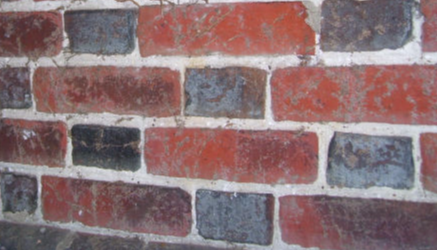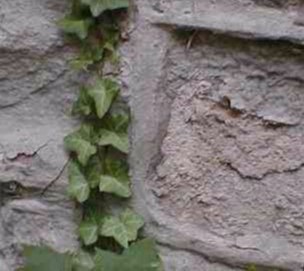

"This building was built with inferior bricks."
-A mason of 30 years
"All the bricks used to build this town are crap and crumbling." -An Architectural Historian
"Don't blame the bricks." -Me

Surface Deterioaration
It's usually not the bricks (or the stones) that are the problem. It's usually not how it was constructed that caused the issue. It's most often because of inappropriate materials and methods used for basic maintenance.
The mortar bedded between the bricks of old buildings is likely lime-based mortar. This "soft" mortar consists primarily of sand and lime. Modern "hard" mortar is made with Portland cement, which was not commercially available in North America until about the mid 1870s. Even then, it was mostly used as an additive to the mortar mixture and was not a primary ingredient in mortars until around 1930.
Repointing or other repairs to historic brick walls with modern Portland cement based mortar can cause extensive damage to the old bricks. The old, soft, lime-based mortar between the bricks has served as a path for any moisture within the walls to wick out to the exterior. Denser, less permeable Portland cement mortar applied to the joints can force moisture to migrate through the face of the bricks (or soft stones) instead. When the moisture evaporates, it also can leave soluble salt deposits in the hard "skin" of the bricks. The salts then crystallize, causing the surface of the brick to "spall." Once the hard skin, or crust on the surface is gone, the soft, inner portion of the brick is exposed to the weather and erodes.


Other Benefits of Lime Mortar
Unlike stiff, brittle modern mortars, lime-based mortar's elasticity absorbs stresses, movement and vibrations. Portland cement can trap moisture in the old, soft bedding mortar, which can result in the joints swelling. Lime mortar can also heal itself by perpetually dissolving lime that naturally fills small cracks and voids that may develop (picture stalactites forming).
Used With Stone Too
The properties of lime-based mortar also make it a wise choice for repointing and repairs to stone walls and foundations. Although I've never seen significant damage to hard, igneous or metamorphic stones pointed with hard mortar, soft sedimentary stones can suffer the same as bricks. I've found some limestone and sandstone foundation so severely eroded, that the mortar joints now project well beyond the

surface of the stones. Soft mortar doesn't seem to be a weakness when used in stone structures. I've visited some 700+ yeasr old buildings that have performed quite well without the hard stuff ever being used.
Questions
Should I have all the wrong mortar removed and replaced? Removing the "hard" mortar usually involves a power tool with a grinding wheel to gouge out the mortar. It will likely result in significant damage to the surrounding brick surfaces. I suggest any future repairs repairs and repointing be done with the appropriate mortar that closely matches nthe original bedding mortar.
What should be done with the spalled bricks? We used to chisel out each one, flip it around and place it back in. There is now a patching mortar - lime based - that can be used to repair spalled bricks and deteriorated stones in place. It can be custom blended to closely match the surrounding surfaces. LimeWorks Lithomex
Where can I get the appropriate lime based mortar? Try LimeWorks (no affiliation).

Bill Kibbel is a consultant and an inspector of historic homes
& commercial buildings at Heritage Building Inspections.
Made with Mobirise - Check it